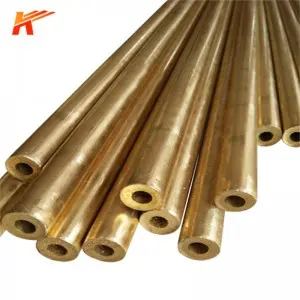
Brass pipe is a pressed and drawn seamless pipe with strong and corrosion-resistant properties. Brass pipe is the best water supply pipe and has become the tap water of modern contractors in all residential commercial buildings. Excellent choice for plumbing, heating and cooling piping installations.
The following is a brief introduction to the production process of brass tubes, as well as the specifications and mechanical properties of common brass tubes.
Production process of brass tube:
1. Gas protection melting and heat preservation→horizontal continuous casting of copper tube billet→milling to remove surface defects→three-roller planetary rolling→on-line coiling into coils→three-series joint stretching→disk stretching→straightening, flaw detection, sizing→ Bright annealing→joint finishing→quality inspection→coating, packaging→finished product
2. Upward drawing smelting→upward drawing continuous casting billet→Pilger mill rolling→online annealing coil→three-series stretching→disc stretching straightening, flaw detection, sizing→strong convection bright annealing→joint finishing→ Quality inspection → lamination, packaging → finished product
3. Melting → (semi-continuous) horizontal continuous casting billet → extruding machine to extrude billet → pilger mill rolling → online annealing coil → three-series stretching → disc stretching straightening, flaw detection, sizing → Strong convective bright annealing → combined finishing → quality inspection → film coating, packaging → finished product
During the processing of brass pipe rods, what is the method to prevent stress damage of copper pipe rods?
During the processing of copper tube and rod, especially high-zinc brass and silicon-manganese brass, due to uneven deformation, internal stress will be generated on the tube and rod.
The existence of internal stress will lead to deformation and even cracking of materials during processing, use and storage.
The prevention method is to carry out internal stress relief annealing below the recrystallization temperature in time,
Especially for those alloy materials that are sensitive to internal stress, such as high-zinc brass, internal stress relief annealing should be carried out within 24 hours after rolling or stretching.
Internal stress relief annealing is generally carried out between 250°C and 350°C, and the time can be appropriately longer (such as more than 1.5-2.5h).
Post time: Jan-17-2023

